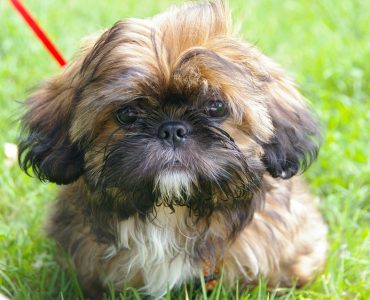The Lhasa Apso dog originates from Tibet. For centuries it was considered sacred and was used as a watchdog in many of the holy places such as temples. The ancient Tibetans believed that when a dog’s owner died, his spirit would enter the dog’s body. They were also thought to be a symbol of good luck. Over time they began to be presented to foreign diplomats and this facilitated the spread of the breed outside of Tibet into Europe and the USA.
This is small and stocky breed of dog. They are renowned for their attractive teddy bear-like appearance and their pretty coats. They may often been seen adorned with bows and ribbons especially when bred as a show dog. They can be found with several colours of coat including cream, gold and honey. They are also seen in darker colours such as slate, brown and black. Like many breeds, the Lhaso Apso has a double coat. The topcoat is very long and shaggy and they have been likened to miniature Old English Sheepdogs. The coat, whilst long, is also heavy and tough. It is not as soft and silky as it looks. This dog also exhibits a great deal of facial hair and has prominent eyebrows, beard and moustache. Its tail also is heavily feathered and usually carried high over the back.
This is a friendly and intelligent dog. They are usually high-spirited and show great devotion to human masters. They are obedient and respond to training in a very positive manner. This dog needs to be handled firmly by its owner otherwise it can easily believe that it is the leader rather than the owner. This can lead to number of undesirable behaviours such as persistent barking, separation anxiety, fighting with other dogs, and intolerance of children. Ensuring that the dog receives adequate and frequent exercise will help to ensure that these behaviours do not emerge and that the dog is happy and healthy both mentally and physically.
The usually friendly and happy nature of the Lhasa Apso makes it a good pet but less so in environments with children. They do not tolerate rough or playful behaviour and must be supervised closely to prevent snapping or biting. This is also not a popular choice for cross breeding as the result can be an aggressive dog. As a pet for a person living alone they are a better choice especially as their natural suspicion of strangers makes them a good guard dog and their tolerance for a more sedentary lifestyle suits those who may not have a large living space.

This is a healthy breed on the whole and its life expectancy is higher than most breeds. It usually lives around 15 years but many dogs live more than 18 years. Compared to other breeds the common ailments are few. They are susceptible to skin problems if the coat is not well cared for. They need to be checked for parasites. They can also develop Hip Dysphasia especially if allowed to become overweight. Other common complaints include ulcers, eye problems and some kidney problems.













